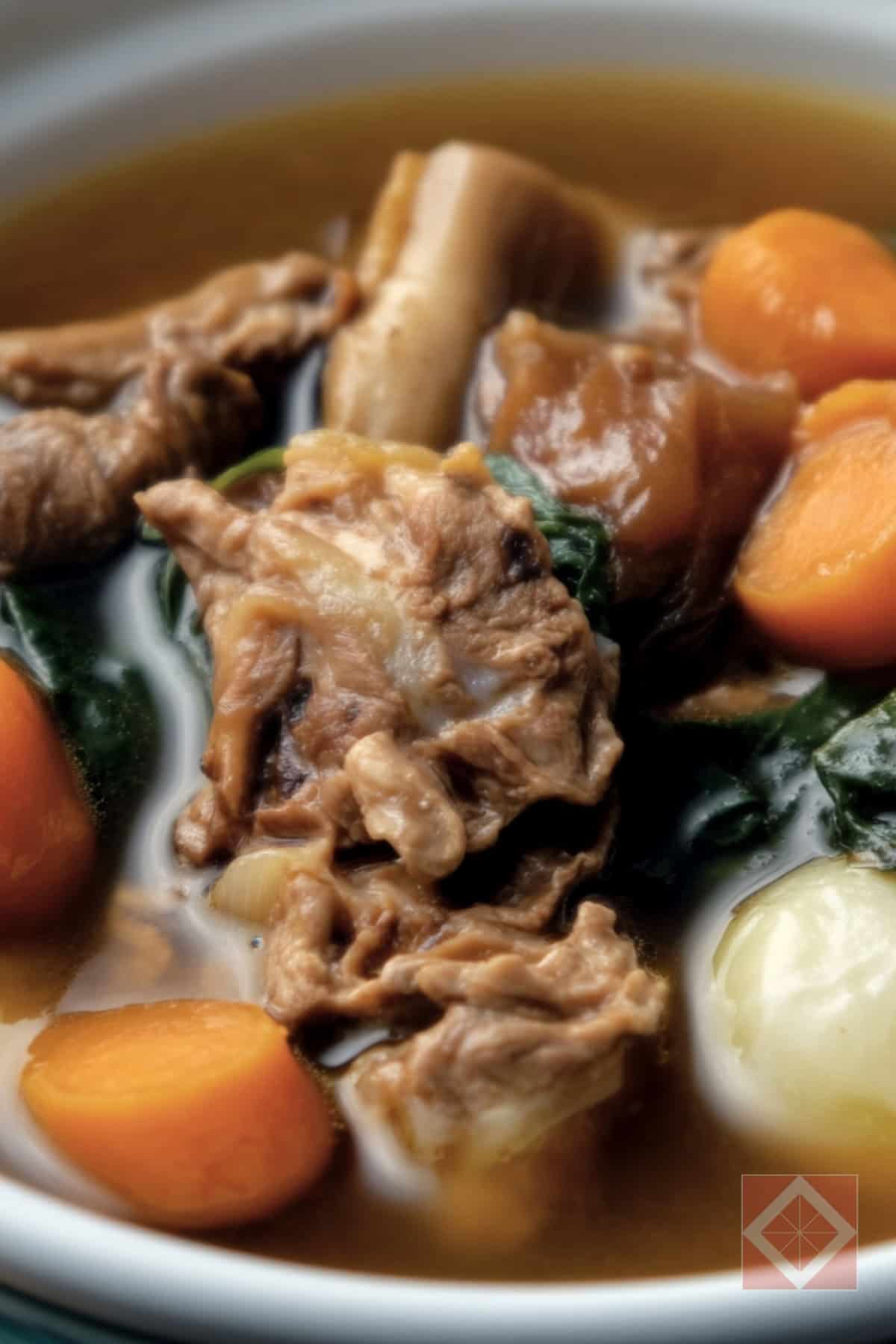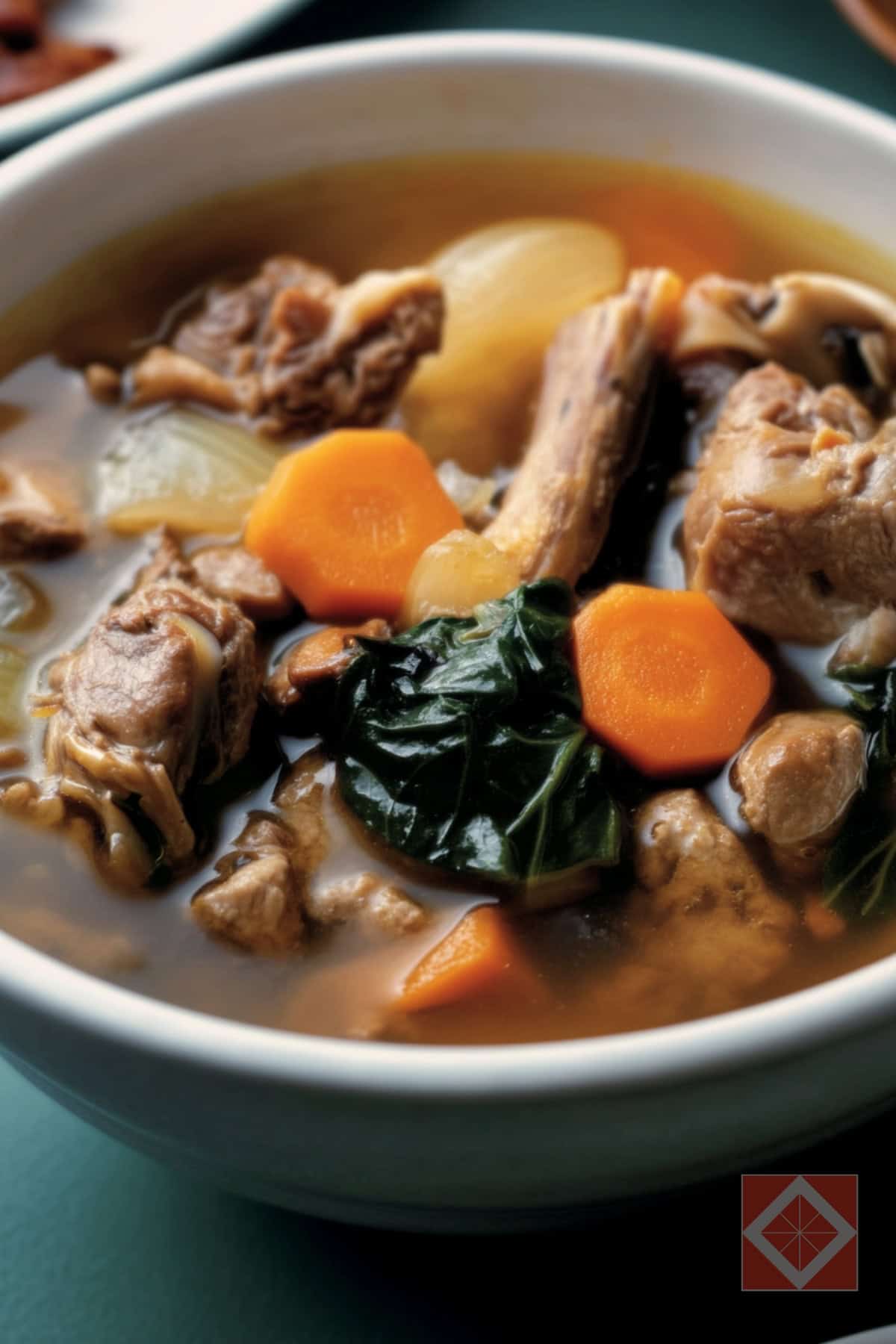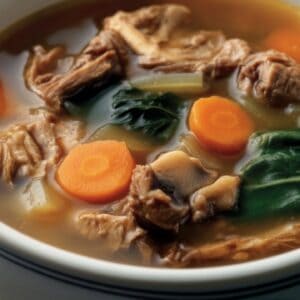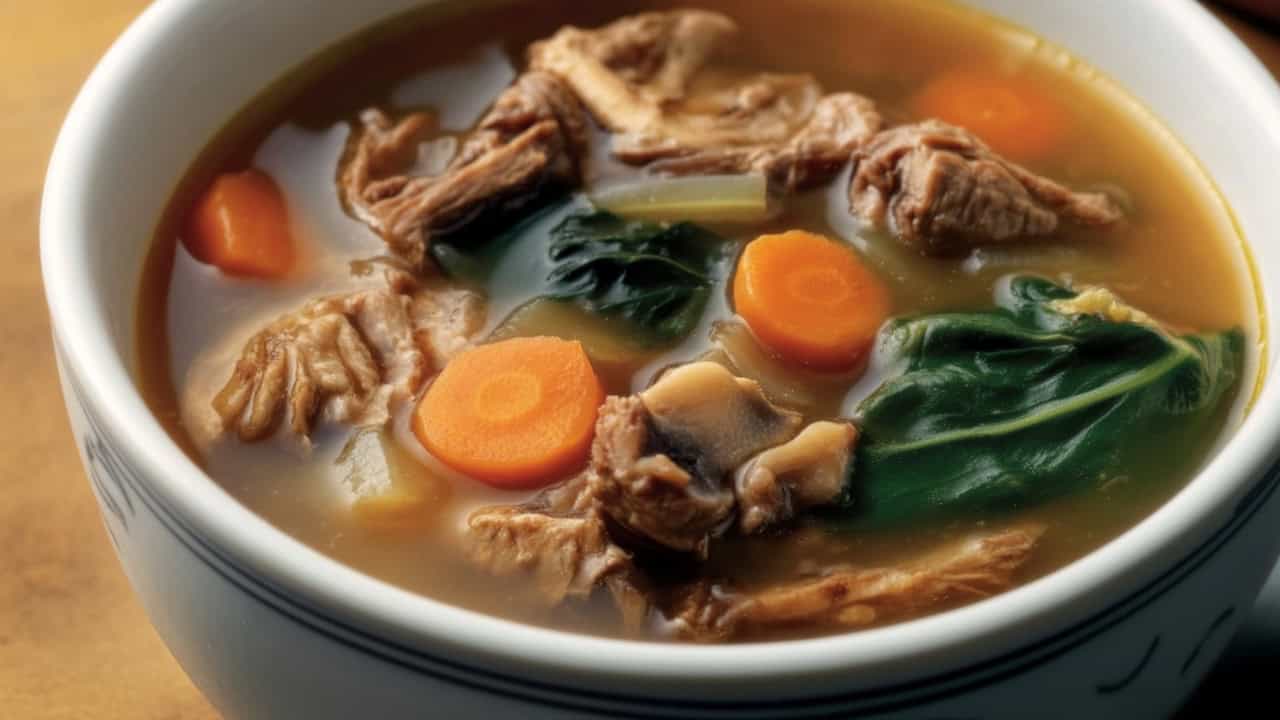This daily soup, slow-simmered and richly aromatic, captures everything comforting about traditional home-style food. It’s not flashy, but that’s exactly the point—this recipe brings together everyday ingredients to create something quietly extraordinary.
In Cantonese homes, soups like this are more than meals. They’re routines, rituals, and gestures of care.
What Makes This Recipe So Special

The heart of this dish is in its method—low and slow. Boiling is kept to a minimum, ensuring clarity and depth in the broth without overwhelming any one note.
Unlike quick soups that rush the process, this one relies on time to coax out flavor, producing a clean yet layered result. No stirring, no sudden temperature changes—just a gentle, even simmer that creates a clear broth with a full, rounded profile.
This soup is especially beloved for its subtle blend of sweet and savory elements. The carrots and Chinese dried figs contribute natural sweetness, while goji berries and red dates offer floral and fruity depth.
The addition of dried mandarin peel is a clever twist that brings a delicate citrus brightness, balancing the richness of the pork.
Tips for Getting the Most Flavor
One of the secrets to achieving the best version of this lai tong is soaking and prepping the dried ingredients thoroughly. For instance, soaking the dried mushrooms overnight not only softens them but also deepens their umami when they’re added to the broth.
Reserving the soaking liquid (if clean) can even provide an extra hit of mushroom flavor.
Rinsing the bones and boiling them briefly before the full simmering process is another smart step that makes a big difference. It results in a clearer, cleaner broth that’s free from the heaviness some pork-based soups can carry.
It’s a small step that transforms the overall experience.
Another helpful tip: cut the vegetables into larger chunks. This ensures they hold their shape during the long simmer, adding body to the soup without becoming mushy.
Carrots, especially, benefit from this—they’ll soak up the broth and provide a sweet contrast to the pork.
Substitutions & Variations
This Cantonese recipe is highly adaptable. If pork neck bones aren’t available, pork ribs can be used for a similar flavor, though adding a little more weight helps balance the taste.
For those avoiding pork, chicken works in a pinch, but the depth of the soup may shift slightly.
Those following plant-based diets can try making a vegetarian version by omitting the meat and doubling down on dried mushrooms and root vegetables.
The result will be lighter but still fragrant and full-bodied, especially with ingredients like goji berries and mandarin peel.
Low-sodium sea salt is suggested here, but it can easily be adjusted to taste—just be sure to wait until the very end of cooking before adding extra. This preserves the integrity of the ingredients and allows the natural sweetness to come through.
How to Serve & Store

Lai tong is often served as a starter in multi-dish Chinese meals, but it’s hearty enough to stand alone.
For added texture and flavor, the cooked pork can be pulled out and served on the side with a splash of light soy sauce. This makes it perfect for family dinners, where everyone can tailor their plate.
This recipe also lends itself well to batch cooking and meal prep. The soup keeps beautifully in the fridge and tastes even more developed the next day. Just reheat gently on the stove to preserve its clarity.

Chinese Cantonese Lai Tong Recipe
Equipment
- Large heavy-bottomed soup pot
- Colander
- Small bowls for soaking
Ingredients
- 2 ounces dried bok choy soaked overnight
- 4 large dried shiitake mushrooms soaked overnight
- 2 pounds meaty pork neck bones or 3 pounds pork ribs, soaked for 1 hour
- 13 cups water
- 2 to 3 large carrots chopped into large chunks (about 8 ounces)
- 3 slices fresh ginger ½-inch thick each
- 2 dried Chinese red dates
- 6 Chinese dried figs
- 1 small piece dried mandarin orange peel
- 2 tablespoons dried goji berries
- 1½ teaspoons fine sea salt more to taste
Instructions
- Prepare the Bok Choy and Mushrooms: Rinse the soaked bok choy thoroughly, cutting it into 1-inch pieces. If the soaking water is clear and clean, you can reserve it for cooking. Otherwise, discard it. Do the same with the mushroom soaking water—keep it if it’s clean, as it adds flavor.
- Parboil the Pork Bones: Place the soaked pork bones in a heavy-bottomed soup pot and add enough water to just cover them. Bring to a boil, then boil for 1 minute. Remove the bones, drain in a colander, rinse them under cold water, and wash out the pot. This step ensures the broth stays clear and clean-tasting.
- Combine All Ingredients: Return the pork bones to the clean pot. Add the bok choy, shiitake mushrooms, carrots, ginger, red dates, figs, orange peel, and goji berries. Pour in the 13 cups of water (including any reserved soaking liquid if it’s clean). Cover and bring the mixture to a boil.
- Simmer the Soup: Once boiling, reduce the heat to low and simmer gently for 4 hours. Do not stir or disturb the pot during this time to maintain a clear broth.
- Final Seasoning: After 4 hours, stir in the salt and taste the soup. Add more salt if needed just before serving.
Notes
Davin is a jack-of-all-trades but has professional training and experience in various home and garden subjects. He leans on other experts when needed and edits and fact-checks all articles.

